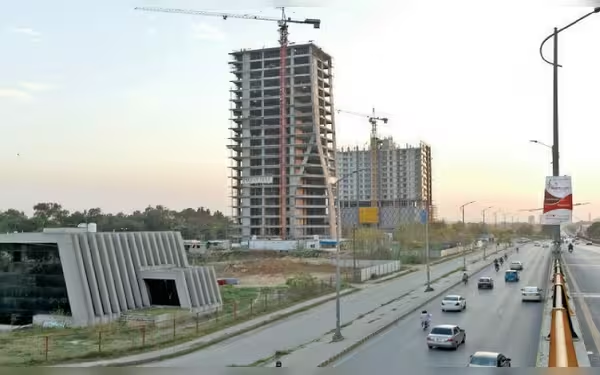Saturday, November 16, 2024 05:46 PM
SIFC Proposes High-Rise Development in Islamabad
- SIFC plans to replace government houses with high-rises.
- Potential to generate billions for national treasury.
- Vertical construction could free up 77 acres of land.
 Image Credits: dawn
Image Credits: dawnSIFC plans to replace outdated government houses in Islamabad with high-rises, aiming to optimize land use and boost economic growth.
In a significant move aimed at urban development and economic growth, the Special Investment Facilitation Council (SIFC) has initiated plans to replace outdated government houses in Islamabad with high-rise buildings. This strategy is expected to generate billions of rupees for the national treasury while optimizing the use of valuable land in the capital city.
Currently, several sectors in Islamabad, including F-6, G-6, and G-7, are home to single-storey government houses. These residences, particularly in F-6, are spacious and often allocated to high-ranking officials, complete with servant quarters. A government official, who preferred to remain anonymous, emphasized the potential benefits of demolishing these single-storey structures. "If such single-storey houses allotted to federal secretaries and other bureaucrats are demolished, dozens of high-rise buildings could be constructed on these government lands. There is a need for a vertical construction approach to save the land bank of Islamabad," the official stated.
The presence of these single-storey houses has resulted in a significant underutilization of state land. A recent study revealed that in the G-6/1 sub-sector alone, government houses occupy 86 acres. By adopting vertical construction, it is estimated that the current housing could be accommodated on just nine acres, freeing up 77 acres of land valued at over Rs52 billion.
This idea of replacing single-storey houses with high-rises has been discussed for nearly two decades, yet no concrete steps have been taken until now. Recently, SIFC reached out to the Capital Development Authority (CDA) for their input on this matter, particularly concerning the G-6/1 area. The SIFC's interest was piqued by a research article from the Pakistan Institute of Development Economics (PIDE) that discussed the concept of "dead capital," which refers to underutilized land that could otherwise contribute to economic growth.
The letter sent to the CDA highlighted the importance of efficient management of state-owned land to meet urban demands and promote city development. It pointed out that when land is underutilized or used for non-productive purposes, it becomes a financial burden, hindering growth and economic potential. The PIDE study indicated that by converting single-storey houses into high-rise structures, up to 77 acres could be freed, potentially generating Rs55.2 billion in revenue and increasing the annual GDP by 0.09%.
The SIFC's letter also noted that this strategy has been successfully implemented in countries like the UK and India. It called for a strategic shift in Pakistan, suggesting the establishment of a centralized database for state-held land, accurate asset valuation, and the involvement of asset management experts to unlock this dormant potential.
As the SIFC awaits feedback from the CDA, the future of this ambitious plan remains uncertain. However, it is clear that the global trend in urban development favors vertical construction, and Islamabad may soon follow suit. The potential benefits of this initiative are substantial, not only for the economy but also for the efficient use of land in a rapidly urbanizing world.
The SIFC's proposal to replace government houses with high-rises in Islamabad represents a forward-thinking approach to urban planning. By embracing vertical construction, Pakistan can optimize its land resources, stimulate economic growth, and address the pressing needs of its urban population. As discussions progress, it will be crucial for stakeholders to collaborate effectively to turn this vision into reality.













